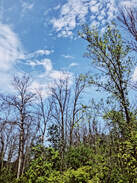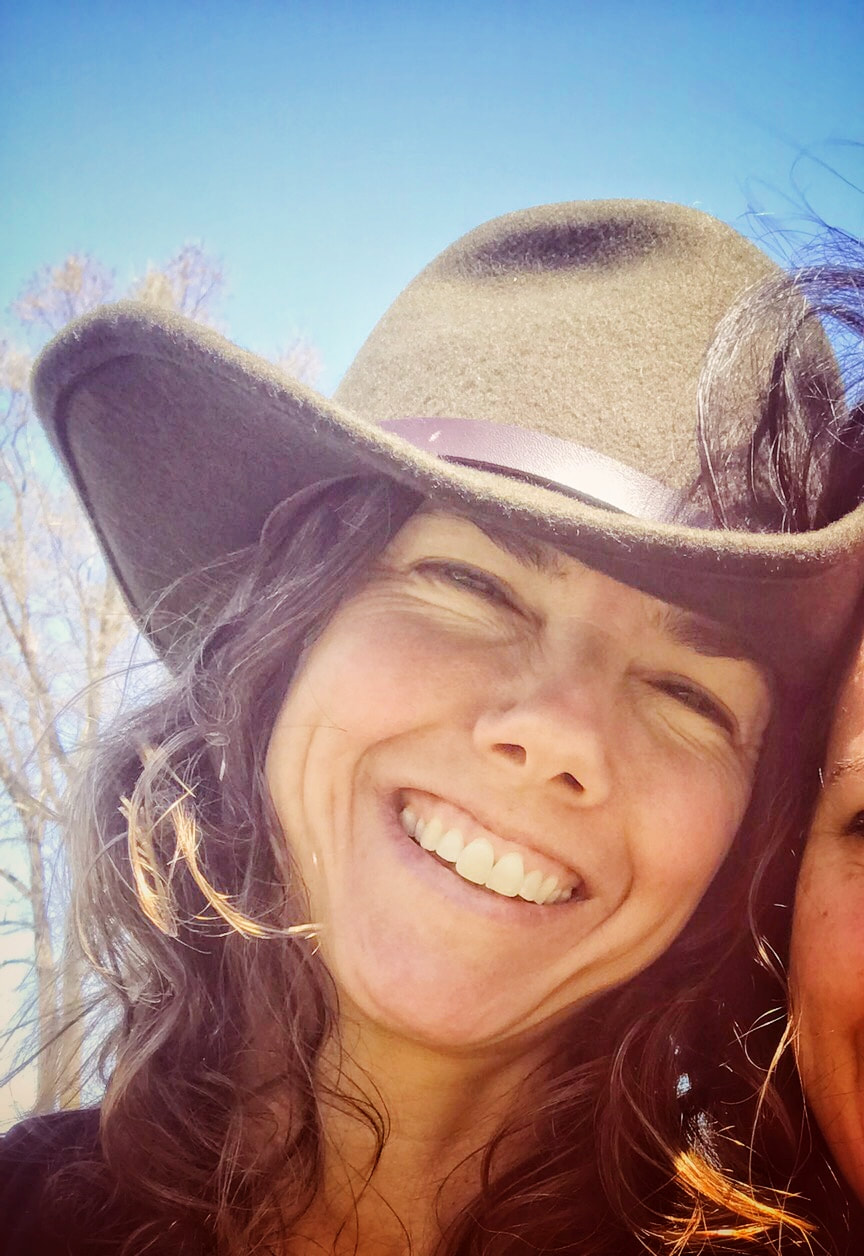 I vividly recall the lush green landscape of the Rocky Mountain National Forest. It was early July, 2006. I was on the final leg of my journey to my new home in Denver, Colorado. A mere five years later that majestic emerald landscape turned mostly brown thanks to the warmer winter temps that were conducive to the rapid take over of the pine beetle. In just two more years those same mountain vistas were consumed by ravenous wild fire. During a move to the Pacific Northwest in the Spring of 2013, I witnessed the same progressive destruction of portions of the eastern Cascades. When we landed in our new home in the upper most corner of the Pacific Northwest cradled between the Cascade Mountain Range and the Puget Sound, I was relieved to discover trees that were hearty and thriving. That said, their summers now have an official "fire season" which means that there is a constant haze in the sky and breathing conditions are dangerous from what migrates through the air from surrounding territories where the pine beetle, drought and climbing temps are destructive trio. In 2016, a return to the Great Lakes region of Southeast Wisconsin put me face to face with more dead or dying trees. To my dismay I observed that many of the pine trees appeared to be distressed with browning at the base due to a tree fungus called rhizosphaera needle cast. Upon revisiting one of my favorite hiking spots in the Northern Kettle Moraine State Forest, I was heartbroken to realize that all the ash trees I had enjoyed a mere 15 years prior had surrendered their lives to the emerald ash borer, an invasive critter brought to the region via the wood from Chinese shipping crates. My heart sinks to know that my daughters will never get to ride their bicycles through the magical yellow fairy forests that I so fondly recalled from a short time ago. This summer I am observing a whole new round of tree die off. While I am not for certain the cause, it appears that the polar vortex of winter took its toll on many of the trees and partially or fully deprived them of any color this summer. It’s bizarre to look through a forest of trees that appear to simply be dormant for the winter knowing that it’s actually midsummer and 90+ degrees outside. I am painfully aware that their leafing days are likely over. When I contemplate all of this during my daily commute, what saddens me the most is nobody seems to be talking about it. Even my own husband who takes pity on a drooping tomato plant thinks I am a Negative Nelly when it comes to the state of our trees. He is right that others are thriving while I tend to take notice only of the dying ones. For me it’s like the big pink elephant in the room that we go on pretending is not really there. It’s a sunny day and we delight in the warmth and talk about the fun ways we are entertaining ourselves this summer. Meanwhile the trees are silently screaming out to us to pay attention...to take action. We pretend not to hear because what the hell can we do at this late stage in the game of human life on earth. We have tipped the balance and what was once an earth with seasons that favored our existence is forcing us to seek refuge indoors from the increasing discomfort we feel when we are outside of our artificially climate controlled environments. We lost 3 trees to Dutch elm disease this spring or perhaps they suffered from severe frost bite. I know I couldn’t last more than five minutes out there for a stretch of days this past winter, but I had the good fortune of legs to carry me closer to a source of heat provided by burning fossil fuel. These trees seemed to be offering themselves up as a sacrifice lest we have to succumb to the shivering cold. It seems we have convinced nature that she exists merely to serve us. We have taken for granted her resiliency. Mother Nature has always seemed so willing and able to bounce back for our benefit. Her changes have always seemed slow and gradual to the untrained eye...with bursts of change here and there that she could withstand. Her seasons have been so dependable that we rarely call into question how she might behave this time around. Times have changed in the seeming blink of an eye. Our climate seems to have taken cues from we humans and quickened her own pace to keep in step with our own. When I was my daughter's ages, there was no reason to question whether my favorite tree swing would have a canopy of leaves above my head to shelter me from the midsummer rays. And if those rays happened to kiss my virgin skin, there was no reason to fear that I would be dangerously sun burned and at greater risk for developing skin cancer one day. Call me a pessimist if you like. I see myself as a realist and I feel called to draw attention to the things I see. If I could slow the clock down on anything it would be climate change. How about you? Do you have a different view? I’d like to know.
0 Comments
Leave a Reply. |
I'm Kelly Isabelle.Full-time workin' mama & spouse aspiring to live a slowly paced, sustainably minded, creatively expressed, clutter-free life shared with kindred folk. Archives
March 2020
Categories |

 RSS Feed
RSS Feed